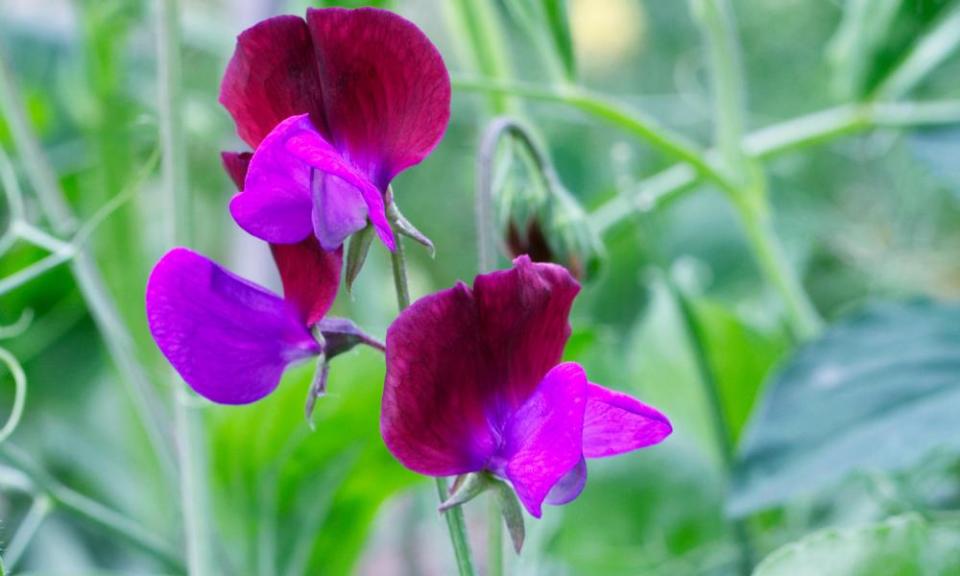How to grow sweet peas
A pop of pink, a frilly edge, a pure white bloom against a clear blue sky: choosing sweet peas for summer while it’s dark and gloomy outside provides a good jolt of optimism. Think of vases filled with heavenly scented blooms for only a few pounds’ worth of seed.
The lore is that the best sweet peas are sown in December to give them time to get their roots down while the cold air of winter keeps the top growth sturdy. However, I’ve found sowing in January and early February gives as good results. Sweet peas sown now will need protection, be that a cold greenhouse, the plastic patio sort, a cold frame, a cold front porch or a sheltered balcony. You need good light and must keep the very worst frost off (the plants can’t go below 5C). But once the seedlings are up, they should be kept cold: this causes the plant to sideshoot, which means bushier growth and more flowers.

Sweat peas send out a single root initially, and the longer it can run before it hits the bottom of the pot and starts branching, the happier the plant. This is why they are sown in longer pots, traditionally long toms; the modern equivalent is a deep root trainer made from reusable plastic. These are well worth investing in. Alternatively, you can place one seed inside a loo roll tube and plant out the whole thing in spring – the cardboard will rot away. If space is limited, sow the seeds densely in a small seed tray and transplant as soon as the seedlings are big enough to handle.
Sow on a warm windowsill; seeds germinate best at 10C. Use a good peat-free multipurpose compost and make sure the seeds are covered with a little of it, 5mm, after sowing. You don’t need to firm the compost down, just sit the pot in a tray of water. Don’t water again until your seeds germinate. As soon as the first shoots break through, move the plants outside; this will stop them getting leggy. Slugs and mice can be a pain, but apart from that there is little to do other than watering. Plant out when all chance of hard frost has passed in spring and you should have plenty of blooms by June.
Related: How to toughen up seedlings for planting in the ground | Alys Fowler
Roger Parsons Sweet Peas offers excellent mixtures of varieties and value for money. The Old-Fashioned Mixture will give the best blooms for the garden; if you’re after cuttings for vases, try the Semi-Grandiflora Mixture or the Paintbox Mixture. If you have space for only one, then it has to be Matucana, a wild sweet pea brought to the UK from Sicily in 1699: it has the most heavenly scent and delightful magenta and purple flowers.

 Yahoo Finance
Yahoo Finance 